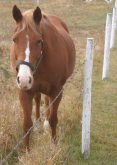RED DEER- Beneath the soil’s surface lies a teeming jungle of microscopic animals, insects, fungi and insects all competing for food.
“Soil is alive. It is dynamic and you have an influence over it,” said Jill Clapperton of Agriculture Canada. She studies the rooting zone of the soil and explained the relationships of living organisms that toil beneath the surface during the recent western Canadian grazing conference held in Red Deer.
“If you do not have biological activity in your soil, you do not cycle nutrients efficiently or effectively in your soil,” she said.
Read Also

Beef check-off collection system aligns across the country
A single and aligned check-off collection system based on where producers live makes the system equal said Chad Ross, Saskatchewan Cattle Association chair.
Vigorous plant production is reflected in the productivity and health of animals that eat the plants. Maintaining healthy soil benefits people because the mineral nutrients found in the food, at some point, existed in the soil.
In undisturbed soil, most nutrient cycling, roots and biological activity are found in the top 20 to 30 centimetres. This is called the rhizosphere or rooting zone. The rooting zone is the root, soil attached to the root and the adjacent soil influenced by the root. On the Prairies, the most action probably occurs in the top five cm of topsoil.
Every plant has a unique rooting system and leaves behind an individual signature in the form of carbon.
Carbon is the most important element in soil. Everything that lives near the roots depends on carbon. If something upsets the balance, it is war among the organisms as each fights to survive.
This affects plant growth and productivity.
“These things are gassing each other with hydrogen cyanide and various other nasty antibiotics,” she said.
Soil that smells like rotten eggs means there is not enough carbon and too much anaerobic activity happening.
“Less root mass means there is less carbon and a habitat change,” she said.
Crops with more roots provide a larger area for soil microbes to colonize and add more organic matter to the soil. Deep-rooted plants stabilize the soil and draw water and micronutrients up to the rooting zone for the next crop.
Pasture and perennial crops in rotation help increase the organic matter in soil and provide a stable habitat for soil organisms. The increased diversity of plant species in pastures increases the diversity of soil organisms, which helps the cropping system adapt to environmental factors.
Overgrazing of pastures can remove too much residue and trampling can compact the soil, reducing water and air infiltration. Overgrazing also reduces the root mass.
Each soil organism has a role to keep the system functioning.
Bacteria are the prime colonizers of dead plants and roots. The sticky secretions that come from bacteria as they move along bind soil particles. They transform ammonia to nitrogen so plants can take it up.
Bacteria also produce growth-promoting compounds that stimulate plant growth from the roots.
Fungi are often thought of as pathogens, but most have a valuable use in decomposing litter and binding soil particles together.
When mycorrhizal fungi colonize a plant, they increase the amount of sugar that moves to the roots. This increases photosynthesis and amino acids, which makes soil phosphorus more available to the plant.
Fungi and bacteria are also a food source for other organisms living in the soil.
Earthworms are ecosystem engineers and can dramatically change soil. Their burrows form macropores so roots, oxygen and water can easily move through. They also eat dead plant material. Their fecal pellets are full of nitrogen available to plants.
The presence of earthworms improves pasture productivity by up to 30 percent.
Earthworm numbers increase with no tillage and in pasture conditions. Their burrows can last for years increasing soil aeration, water infiltration and nutrient availability to plants.
“When earthworms are in the soil in abundant numbers you can make available 15 to 30 kilograms per hectare of nitrogen,” Clapperton said.
The linings of their burrows are covered with mucus from the earthworms’ outer skin. This is a source of carbon that feeds other organisms.
Tillage and applications of fungicides stress all of these soil residents.
While all of these elements are present in the soil to help plants grow, many modern plants have been bred for top growth rather than root development. They do not easily take up nutrients or compete against weeds as efficiently as older varieties.
Planting crops that are more self-sufficient may be the answer for the future of sustainable agriculture. Farmers cannot justify heavy use of expensive commercial fertilizers when considering the return on grains.
“If we are going to be sustainable in the long term, we need to have varieties of plants that grow without luxurious amounts of nutrients,” she said.
“A lot of the old original breeds of plants are way more efficient at nutrient uptake and far more competitive than the new varieties are in many cases.”

















